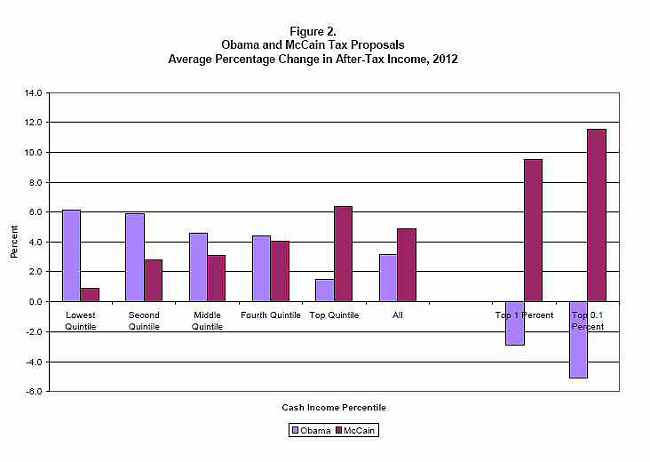McCain’s Tax Policy Favors the Wealthy
The Tax Policy Center has published an exhaustive comparison of the candidate’s tax policies. They see a stark difference.
The two candidates’ plans would have sharply different distributional effects. Senator McCain’s tax cuts would primarily benefit those with very high incomes, almost all of whom would receive large tax cuts that would, on average, raise their after-tax incomes by more than twice the average for all households. Many fewer households at the bottom of the income distribution would get tax cuts and those whose taxes fall would, on average, see their after-tax income rise much less. In marked contrast, Senator Obama offers much larger tax breaks to low- and middle-income taxpayers and would increase taxes on high-income taxpayers. The largest tax cuts, as a share of income, would go to those at the bottom of the income distribution, while taxpayers with the highest income would see their taxes rise.
This is their chart.

Further analysis.
The Obama plan would still provide the largest tax breaks, measured as a percentage of after-tax income, to those in the bottom quintile. Each quintile would, on average, receive a tax cut but those at the very top of the income scale would receive tax increases. On average, the top 1 percent would receive a tax increase equal to about 3 percent of income; that figure would rise to about 5 percent of income for the richest 1 in 1,000 households.
As in 2009, the McCain tax plan provides very little benefit to households at the bottom of the income distribution in 2012. Households in the lowest quintile receive tax cuts averaging about 1 percent of income. Because McCain
